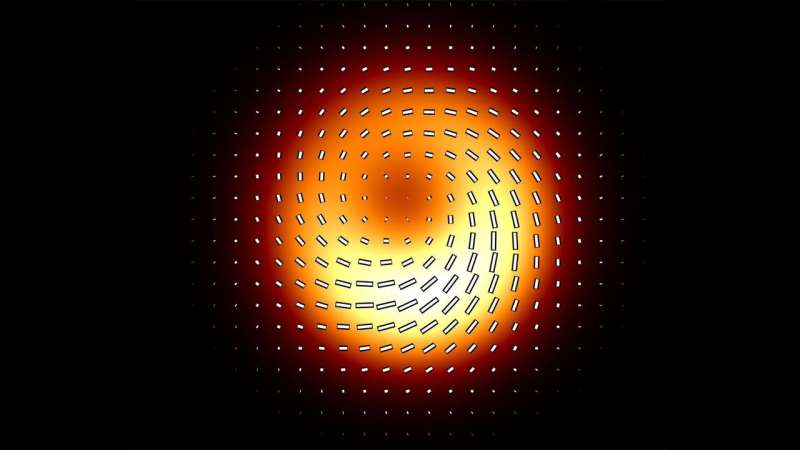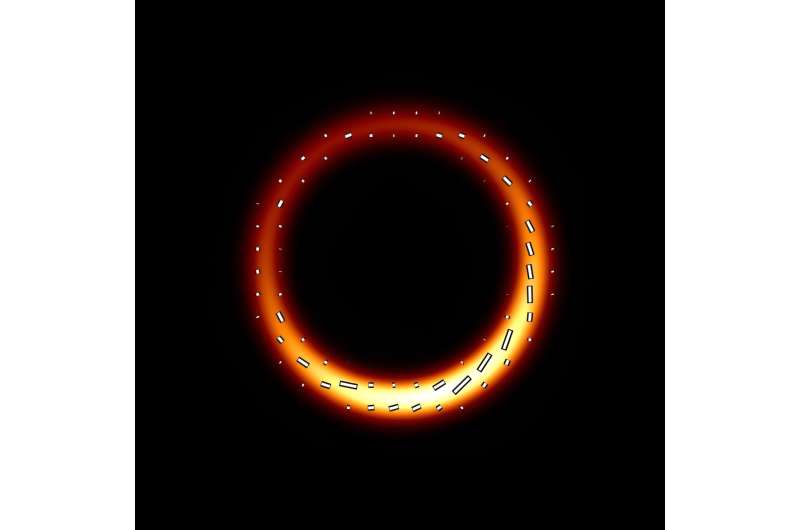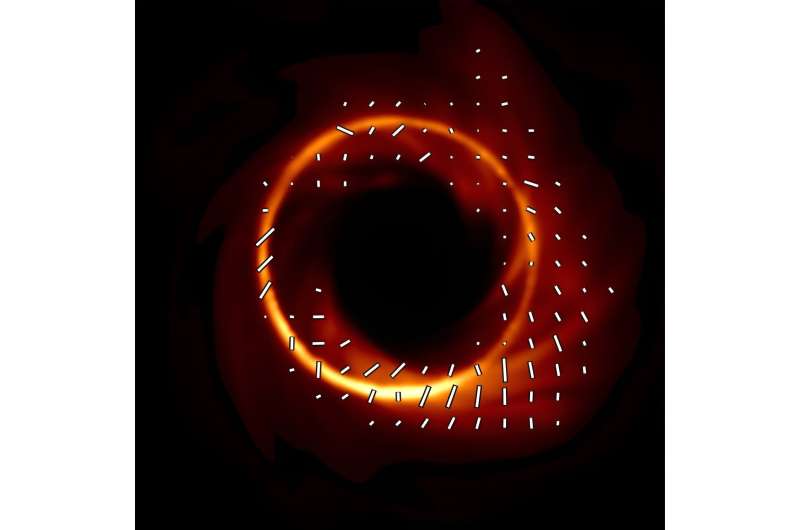This article has been reviewed according to Science X's editorial process and policies. Editors have highlighted the following attributes while ensuring the content's credibility:
fact-checked
peer-reviewed publication
trusted source
proofread
Answering longstanding questions about jets from black holes

The one thing everyone knows about black holes is that absolutely everything nearby gets sucked into them. Almost everything, it turns out.
"Even though black holes are defined as objects from which nothing can escape, one of the astonishing predictions of Einstein's theory of relativity is that black holes can actually lose energy," says astrophysicist Eliot Quataert, Princeton's Charles A. Young Professor of Astronomy on the Class of 1897 Foundation. "They can rotate, and just like a spinning top slows down over time and loses that energy in its rotation, a rotating black hole can also lose energy to its surroundings."
Scientists have widely accepted this model since the 1970s. They knew that magnetic fields probably extracted energy from spinning black holes—they just didn't know how.
A team of Princeton astrophysicists has now determined conclusively that energy close to the event horizon of black hole M87* is pushing outward, not inward. (M87 is the name of the galaxy, Messier 87, so the black hole at its center is designated M87*.) The researchers have also created a way to test the prediction that black holes lose rotational energy, Quataert said, and to establish it's that energy that produces "the incredibly powerful outflows we see that we call jets."
These energy outflow jets "are basically like million-light-year-long Jedi lightsabers," said former Princeton postdoc Alexandru Lupsasca, and they can extend 10 times longer than the Milky Way galaxy.
The results of their work appear in the current issue of The Astrophysical Journal. Andrew Chael, an associate research scholar in astrophysics, is the first author on the paper. He and co-author George Wong are both members of the Event Horizon Telescope team and have played a critical role in developing the models that are used to interpret black holes. Chael, Wong, Lupsasca and Quataert are all theorists affiliated with the Princeton Gravity Initiative.
The team gave Chael credit for the vital insight at the core of the new paper: that the direction in which the magnetic field lines are spiraling reveals the direction of the energy flow. From that, "the rest sort of fell into place," Quataert said.
"If you took the Earth, turned it all into TNT and blew it up 1,000 times a second for millions and millions of years, that's the amount of energy that we're getting out of M87," said Wong, an associate research scholar with the Princeton Gravity Initiative and a member of the Institute for Advanced Study.

Scientists have known for decades that as a black hole starts to spin, it drags the fabric of spacetime around with it. Magnetic field lines that thread through the black hole get dragged along, and that slows down the rotation, leading to the energy release.
"Our new, sharp prediction is that whenever you look at an astrophysical black hole, if it has magnetic field lines attached to it, there will be energy transfer—truly insane amounts of energy transfer," said Lupsasca, a former associate research scholar at Princeton who is now an assistant professor of physics and mathematics at Vanderbilt University, and who won the 2024 New Horizons in Physics Prize from the Breakthrough Prize Foundation for his black hole research.
While the energy flow close to M87*'s event horizon is streaming outwards, the team said that the energy flow could theoretically go inward in a different black hole. They are confident in their link between energy flow and the direction of the magnetic field lines, and their prediction that the energy flow comes from the black hole will be tested with the launch of the still-theoretical "next generation" Event Horizon Telescope.

For the past year and a half, black hole researchers around the world have been proposing specs for the future instrument, Wong said. "Papers like ours can play a crucial role in determining what we need. I think it's an incredibly exciting time."
The four researchers stressed in their paper that they haven't conclusively shown that the black hole's spin "truly powers the extragalactic jet," though the evidence certainly leans in that direction. Even though the levels of energy that their model shows are commensurate with what the jets need, they couldn't rule out the possibility that the jet could be powered by rotating plasma outside the black hole. "I think it's extremely likely the black hole powers the jet, but we can't prove it," said Lupsasca. "Yet."
More information: Andrew Chael et al, Black Hole Polarimetry I. A Signature of Electromagnetic Energy Extraction, The Astrophysical Journal (2023). DOI: 10.3847/1538-4357/acf92d. iopscience.iop.org/article/10. … 847/1538-4357/acf92d
Journal information: Astrophysical Journal
Provided by Princeton University





















